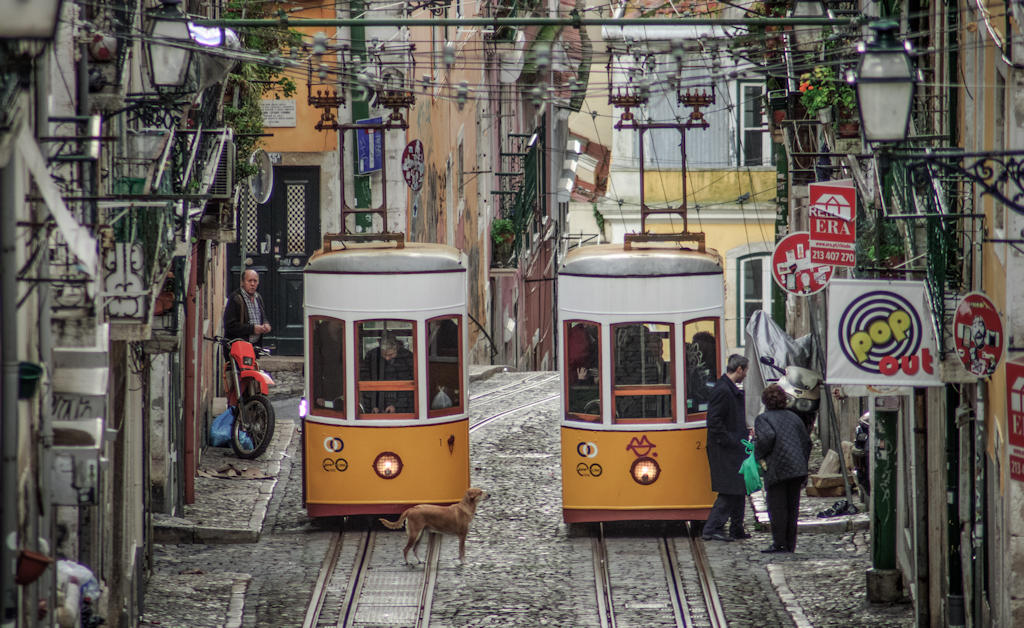The funicular's design is a testament to both functionality and beauty. Two identical carriages, numbered 1 and 2, traverse the tracks, each composed of three horizontally arranged compartments. These compartments, with independent access, provide a comfortable and secure space for passengers during their ascent or descent. Equipped with folding gates, the doors ensure a smooth transition as passengers embark and disembark from the funicular.
Stepping aboard the Bica Funicular is like stepping back in time. As the carriage begins its journey, passengers are transported through narrow streets and winding alleys, offering glimpses of Lisbon's architectural wonders and vibrant local life. The ride spans a distance of 283 meters, with the tracks seamlessly integrated into the city's road pavement. The narrow gauge of 90 cm ensures a smooth and steady ascent or descent, while a central groove connects the funicular to its cable system.
One of the unique aspects of the Bica Funicular is its shared tracks with vehicular traffic, a feature not commonly found among funiculars. This arrangement is a testament to the historical significance of the Bica neighborhood, as it serves as a central spine for the local community. Although vehicles are allowed to traverse the shared section of the funicular's route, traffic is strictly limited to the ascending direction. This careful regulation ensures the safety of passengers and adds to the distinctive charm of the journey.
The Bica Funicular's contribution to Lisbon's cultural fabric cannot be overstated. Its historic and architectural significance led to its classification as a National Monument in February 2002. This prestigious recognition highlights the importance of preserving this cherished transportation icon for future generations.
Over the years, the Bica Funicular has undergone various transformations and adaptations. In 1914, it underwent electrification, replacing its previous steam-powered system. This modernization further enhanced its efficiency and reliability, ensuring a smooth and enjoyable ride for passengers. Throughout its existence, the funicular has also experienced temporary closures for necessary maintenance and renovations, allowing it to maintain its high safety standards and operational excellence.
Lisbon.vip Recommends
As a cultural and historical landmark, the Bica Funicular has left an indelible mark on the city of Lisbon. It has become a beloved symbol of the Bica neighborhood, offering both residents and visitors a delightful and nostalgic experience. Its unique blend of history, architecture, and transportation makes it a must-see attraction for anyone exploring the vibrant streets of Lisbon.
Whether you choose to ride the funicular for its practical purpose or simply to immerse yourself in the city's rich heritage, the Bica Funicular promises an unforgettable journey through the heart of Lisbon. Step aboard, embrace the nostalgia, and let the funicular transport you to a bygone era while enjoying the breathtaking views of this enchanting city.
Map View



